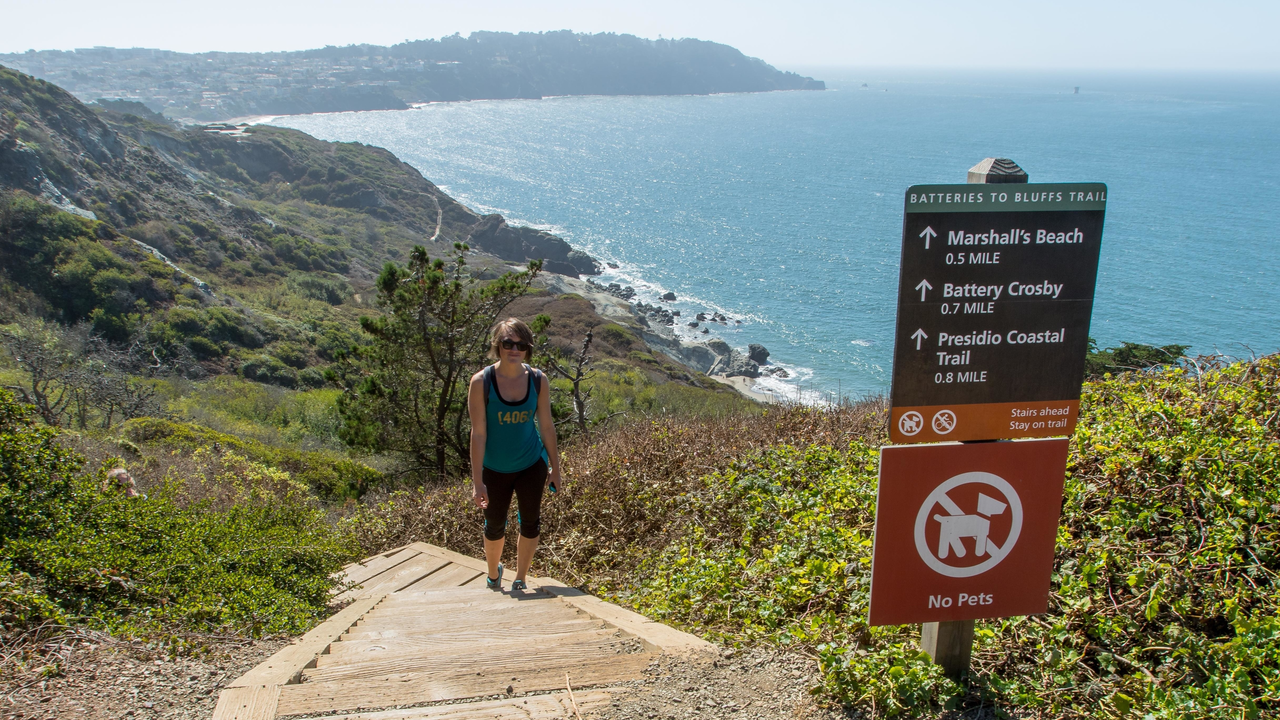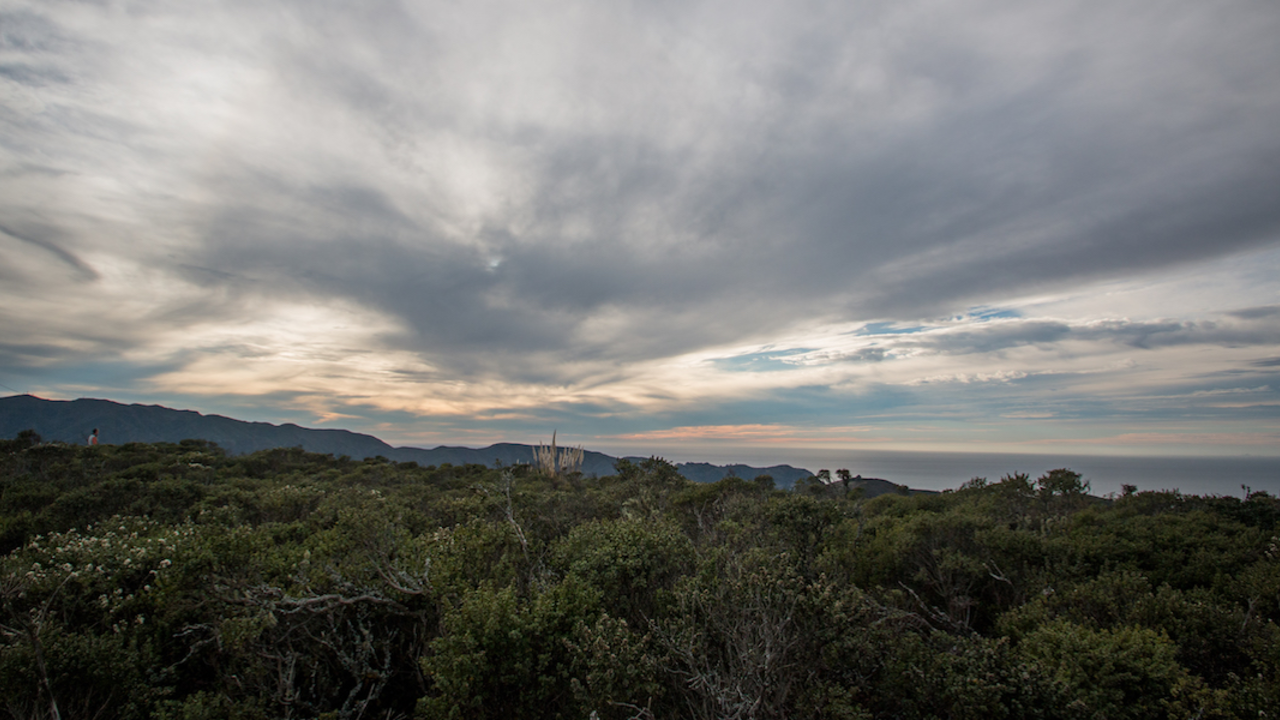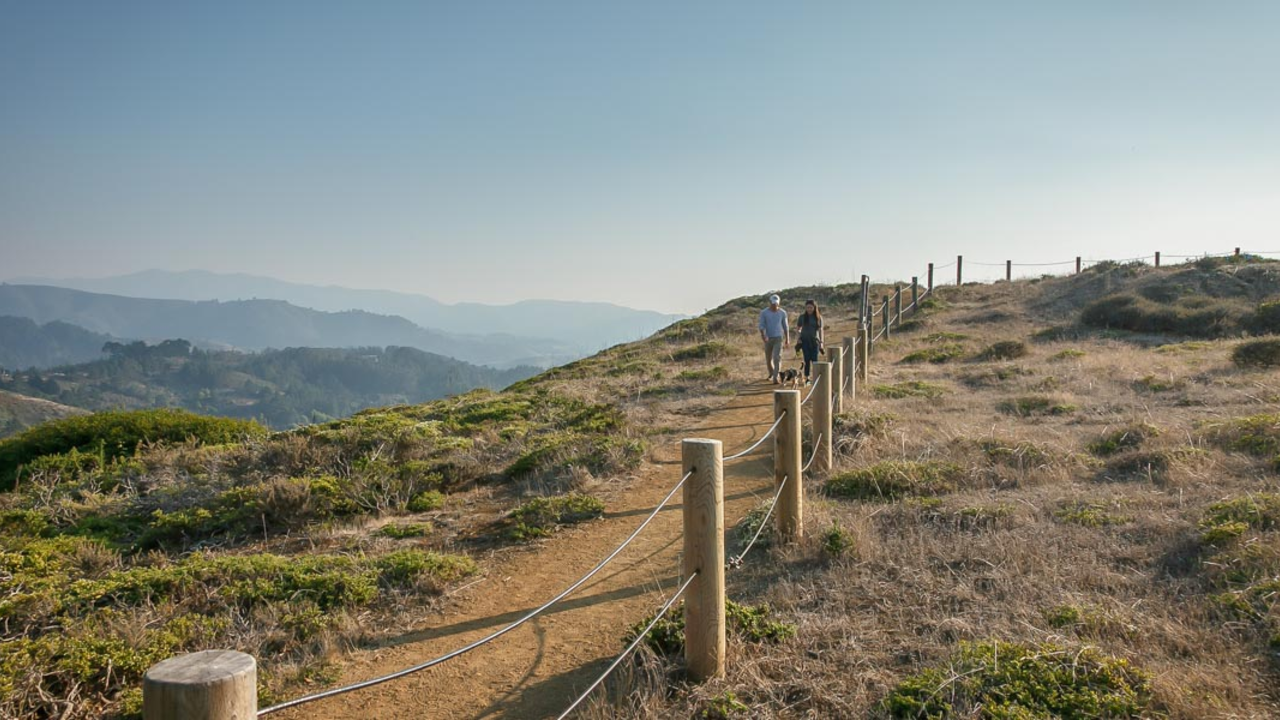Hit the Trail: Fort Mason
Things to do and see
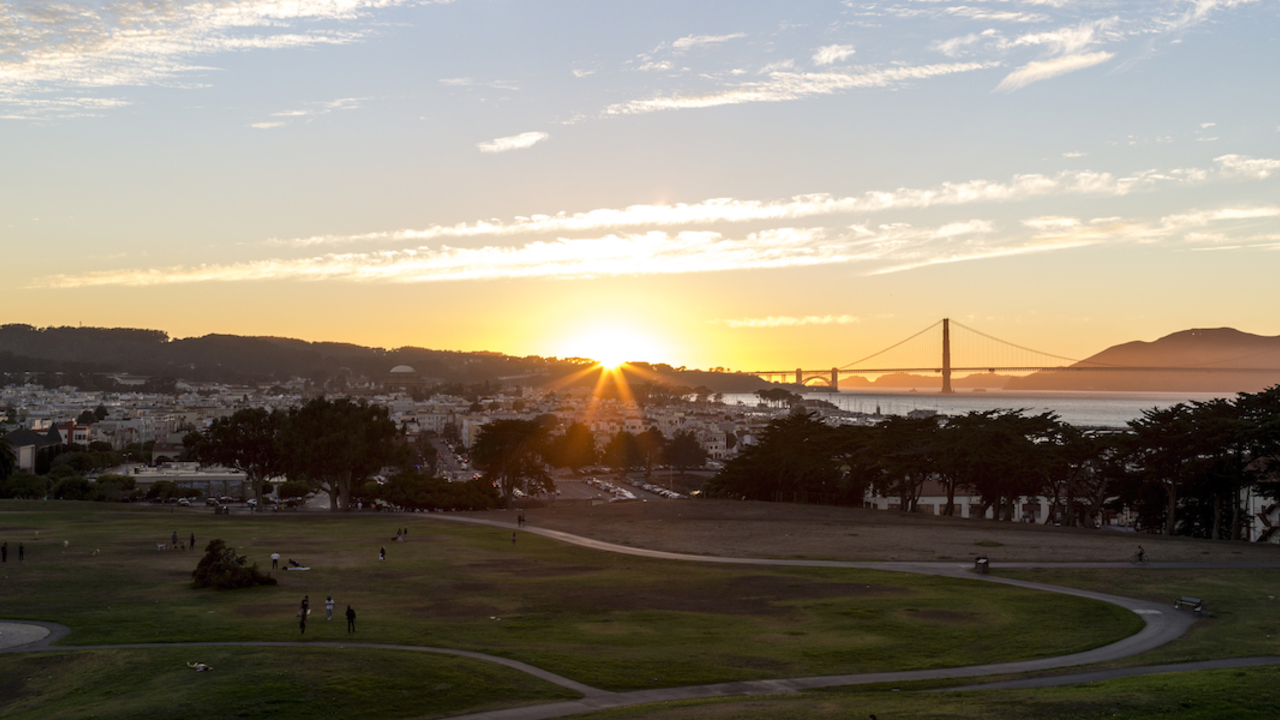
Paul Myers/Parks Conservancy
Fort Mason is a popular destination for history buffs, weekend revelers, and everyone in between. It’s a refuge on San Francisco’s northern waterfront, providing exceptional views of the larger San Francisco Bay.
For more tips, visit our guide to Fort Mason.
Find this trail
A popular sliver of the Bay Trail, the 500-mile pathway circling the San Francisco Bay, snakes along the northern edge of Fort Mason and features lovely Golden Gate Bridge vistas and an overhead view of the piers and buildings of Fort Mason’s waterfront.
All you have to do to access it is come to Fort Mason and walk down one of the paths, you’ll eventually end up on the Bay Trail. We suggest either at the corner of Laguna Street and Marina Boulevard by the Safeway to the west or via Franklin Street and the historic Black Point Battery to the east.
For the westerly route by the entrance to Fort Mason Center, you’ll see a wayfinder and an uphill path towards the Great Meadow, stay to the left to continue towards the San Francisco Maritime National Historical Park.
For the easterly route, we suggest following Franklin Street through the open gates of Fort Mason, stop at the intersection of Pope Road and Franklin Street, (if you’re driving, you can find parking nearby), then continue your way down the sidewalk on the right side of the Fort Mason Chapel.
You’ll eventually end at a staircase, eye-to-eye with Alcatraz in the watery distance. Walk down the stairs and pick a direction (west takes you towards the Great Meadow, east takes you down narrow stairs and pathways to Aquatic Park).
Please note that the Bay Trail is a thoroughfare and is frequently trafficked by visitors on bikes; please be alert and share the path!
Keep an eye out for...
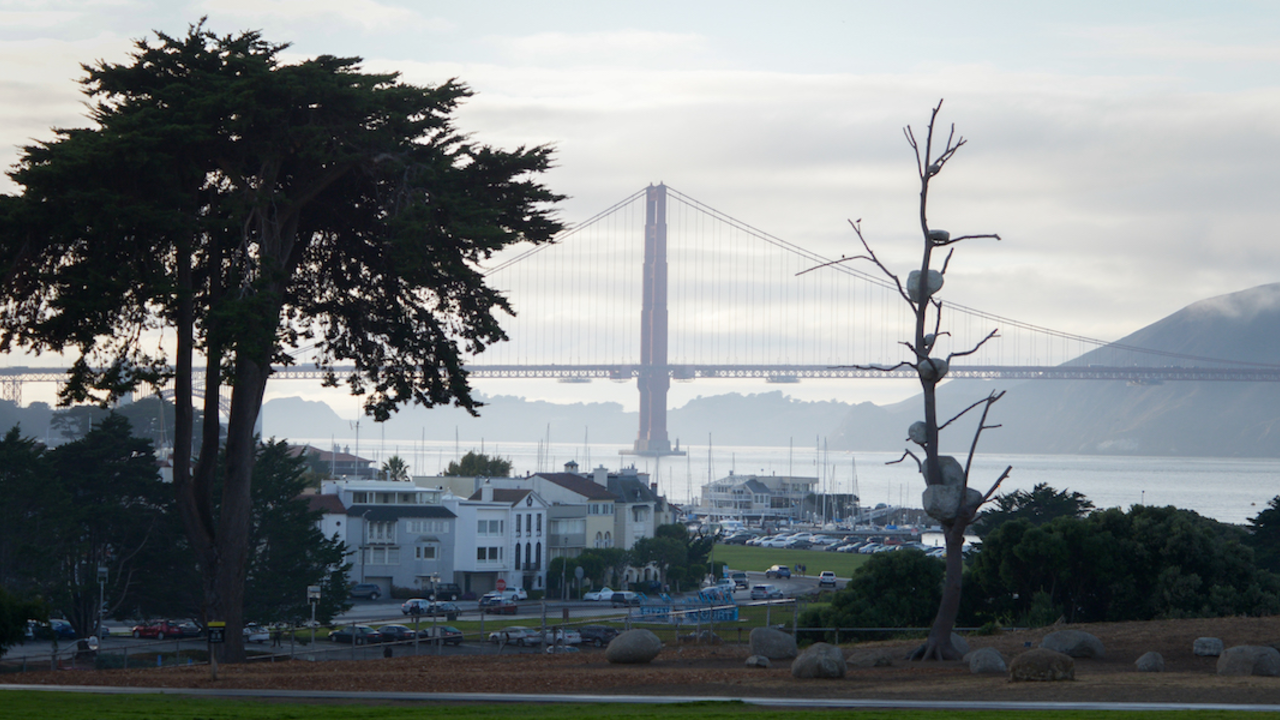
Amid Fort Mason’s signature palm trees and Monterey cypresses, you’ll see a new set of sentinels on the Great Meadow. The Art in the Parks program, in partnership with Gagosian, presents a yearlong outdoor installation by Italian artist Giuseppe Penone. Penone’s work encourages the viewer to consider what is natural and what is man-made, and the intersection between humanity and the natural world. Two sculptures by Penone: La logica del vegetale (The Logic of the Vegetal), 2012, and Idee di pietra (Ideas of Stone), 2004, are currently on view in Fort Mason.
Discover more about this Art in the Parks exhibition.
History tidbit
Before the colonization of the San Francisco Bay Area, both the Ohlone and Coast Miwok indigenous peoples were organized into small, politically independent communities along the marshlands. One of those villages was on the site that later became Fort Mason (and a myriad of other names).
Over the past 200 years, the Fort Mason area was fortified by three governments (Spain, Mexico, and the United States). The Spanish called this site Point Medanos, a vital coastal defense site overlooking the passage between the mainland and Alcatraz Island.
In 1797, the Spanish government built Bateria San Jose (later renamed Bateria de Yerba Buena). By 1822, after the Mexican revolt against the Spanish, Bateria de Yerba Buena fell into disrepair. In 1846, the United States took control of California. By 1851, the U.S. Army established this area as a military reservation called Point San Jose. It was also known by locals as Black Point, named for contrasting colors between the darker color of the vegetation on the bluff against the surrounding lighter coastal scrub and sand dunes.
In 1882, the fortification got the namesake we know today from Richard Barnes Mason, a former military governor of California.
Volunteer
Neglected for decades and tucked away above the hustle and bustle of the San Francisco waterfront, East Black Point needs your help! Join our restoration efforts by volunteering at the Black Point Historic Gardens on the third Saturday of each month from 9 a.m.-Noon.

